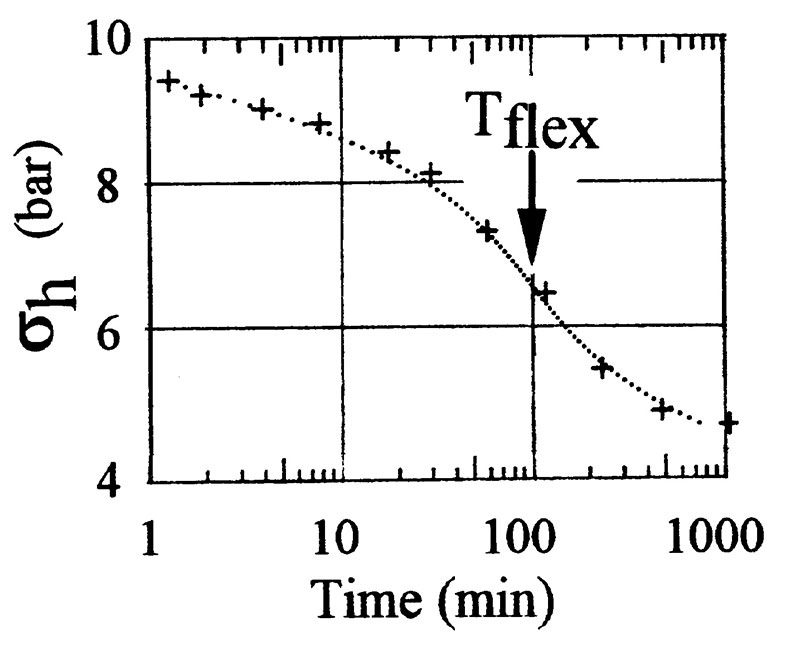The DMTA dissipations consist in taking a timed sequence of the A reading (e.g. at 0.5, 1, 2, 4, 8, 15, 30 etc. minutes after stopping the advancement), deflating immediately (using the toggle valve) after reaching the A pressure (i.e. no expansion of the membrane). The A-values, usually plotted in a log t scale, provide an S-shaped curve, which is the same obtainable e.g. by measuring the interface total pressure by means of a pressure cell. The dissipation is stopped when the A–log t curve has flattened sufficiently to clearly identify the time at the contraflexure point Tflex.
Relatively permeable soils dissipate fast and have a low Tflex. Relatively impermeable soils dissipate slowly and have a high Tflex. The slower the dissipation, the lower the consolidation and permeability coefficients. The consolidation and permeability coefficients are estimated based on Tflex, the inflection point of the S-shaped curve.


